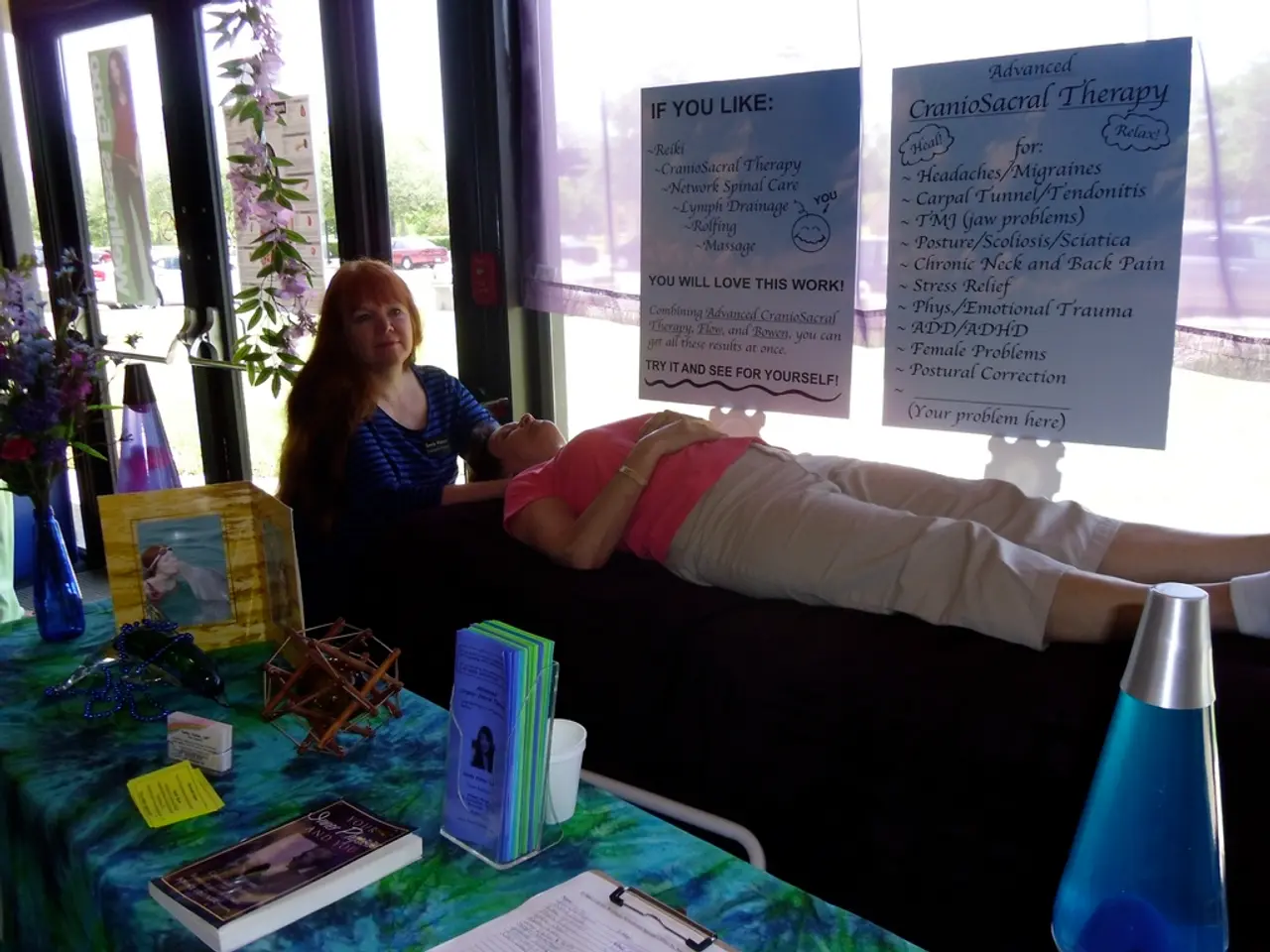Skin inflammation on the ear: Signs, reasons, and remedies
Ear eczema, another term for dermatitis, can affect the ear area and cause discomfort, itchiness, and visible symptoms. This condition can be managed effectively, making it a chronic but manageable condition for many.
There are several common types of ear eczema, each with distinct causes and triggers. The main types affecting the ear area include atopic eczema (atopic dermatitis) and seborrheic dermatitis.
**Atopic Eczema**
Atopic eczema is the most common type of eczema affecting the ears. It typically involves dry, itchy, red, or darker (depending on skin tone) skin on the earlobe, concha bowl, ear opening, and sometimes inside the ear canal. This condition results from a combination of genetic predisposition, immune system dysfunction, and environmental triggers, being more common in individuals with a personal or family history of eczema, asthma, or allergies. Symptoms include itchiness, dryness, flaky skin, and in severe cases, painful cracks or fissures, especially at the junction between the earlobe and the face.
**Seborrheic Dermatitis**
Seborrheic dermatitis is a form of ear eczema related to an overreaction of the immune system to a yeast (Malassezia) naturally present on the skin. It commonly affects the scalp, face, chest, eyelids, and ears, often appearing as inflammation inside the ear canal or behind the ear, leading to painful cracks or fissures.
Other forms of ear eczema may present on the helix (outer rim), external auditory canal, or surrounding skin in children, and are classified as acute, subacute, or chronic based on their duration and severity. Common triggers for ear eczema include irritants (such as soaps, shampoos, earrings), allergens, stress, temperature changes, and infections.
Finding an effective treatment for ear eczema may take some trial and error. Doctors can often diagnose ear eczema with a routine physical examination, and may perform an allergy test known as a patch test. The treatment for ear eczema may include ear drops, prescription or over-the-counter creams, systemic medications, biologic medications, and phototherapy in severe cases.
With proper treatment, ear eczema generally clears up with no long-term effects. People with darker skin tones may experience ear eczema differently, with the affected area appearing dark brown, purple, or gray. Most people with ear eczema can successfully manage their condition with the help of a doctor, home remedies, and lifestyle changes.
Home remedies for ear eczema include washing the ears each night with warm water, using fragrance-free moisturizers, avoiding triggers, wearing a hat in cold weather, avoiding irritants, using over-the-counter anti-itch creams containing hydrocortisone, switching to gentle cleansers, and avoiding scratching.
It is essential for individuals concerned they may have ear eczema to speak with their doctor to get an appropriate diagnosis and the best treatment for them. Ear eczema and psoriasis are chronic inflammatory skin conditions, and it may be difficult for a person to tell the difference between the two. Other conditions with similar symptoms to ear eczema include acne, psoriasis, fungal or bacterial infections, lichen simplex chronicus, viral illnesses, discoid lupus, and intertrigo.
In summary, understanding the types, causes, and treatments of ear eczema can help individuals manage this condition effectively. With proper care and treatment, ear eczema can be controlled, allowing for improved comfort and quality of life.
- Atopic eczema, commonly found on the ear area, is characterized by dry, itchy, and potentially darker skin on the earlobe, concha bowl, ear opening, and sometimes within the ear canal.
- Atopic eczema is typically caused by a combination of genetic predisposition, immune system dysfunction, and environmental triggers, making it more prevalent in individuals with a personal or family history of eczema, asthma, or allergies.
- Seborrheic dermatitis is another form of ear eczema that arises from an overreaction of the immune system to a yeast (Malassezia) naturally present on the skin.
- Seborrheic dermatitis often manifests as inflammation inside the ear canal or behind the ear, leading to painful cracks or fissures.
- Other forms of ear eczema may present on different parts of the ear in children and are classified as acute, subacute, or chronic.
- Common triggers for ear eczema include irritants like soaps, shampoos, earrings, allergens, stress, temperature changes, and infections.
- Finding an effective treatment for ear eczema may require some experimentation, as it varies for each individual.
- Doctors can diagnose ear eczema through a routine physical examination and may perform a patch test for allergy identification.
- Treatment for ear eczema may involve the use of ear drops, prescription or OTC creams, systemic medications, biologic medications, and phototherapy in severe cases.
- When properly treated, ear eczema can clear up without significant long-term effects.
- People with darker skin tones may see ear eczema differently, as the affected area may appear dark brown, purple, or gray.
- Home remedies for ear eczema can help alleviate symptoms and include washing the ears each night with warm water, using fragrance-free moisturizers, avoiding triggers, and using over-the-counter anti-itch creams containing hydrocortisone.
- It is crucial for individuals to consult their doctor regarding ear eczema for an accurate diagnosis and personalized treatment recommendations.
- Ear eczema and psoriasis are both chronic inflammatory skin conditions; distinguishing between them can be challenging for a layperson.
- A range of other conditions containing similar symptoms to ear eczema include acne, psoriasis, fungal or bacterial infections, lichen simplex chronicus, viral illnesses, discoid lupus, and intertrigo.




